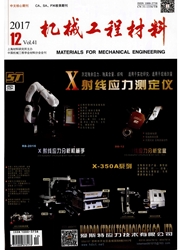

 中文摘要:
中文摘要:
介绍了ASME B31G-2009、BS 7910-2005、PCORRC和API 579-1/AMSE FFS-1-2007四种标准中计算腐蚀管道剩余强度的经验公式,分析对比了四种管道剩余强度评价准则对预测结果的影响;并采用AMSE B31G-2009标准公式、有限元模拟和可靠性分析三种手段分别对某缺陷集输管道进行了剩余寿命预测。结果表明:对于不同钢级管道,API 579-1/AMSE FFS-1-2007标准方法预测的剩余强度最为保守,其次为ASME B31G-2009标准方法预测的,BS 7910-2005标准和PCORRC标准方法得到了相似的曲线,BS7910-2005标准的计算结果要稍大一些;为提高预测精度,需采用非线性有限元和可靠性分析法进一步预测剩余寿命;采用经验公式、有限元法和可靠性分析得到的剩余寿命结果较为接近,分别为10.8,12,13.6a。
 英文摘要:
英文摘要:
Empirical formulas of residual strength of corroded pipeline were introduced according to four standards, ASME B31G- 2009, BS 7910- 2005, PCORRC and API 579-1/AMSE FFS-1- 2007, and the effects of four evaluation criteria on predicted results were analyzed and compared. The residual life of some gathering pipeline was predicted by formula from AMSE B31G-2009 standard, finite element method and reliability analysis. The results show that the residual strength predicted by the method according to API 579-1/AMSE FFS-1- 2007 was the most conservative, followed by that according to ASME B31G-2009 for different strength pipelines. Using the methods according to BS 79102005 and PCORRC got the similar curve, but the result of the former was slightly bigger than that of the latter. To improve the precision of prediction, nonlinear finite element method and reliability analysis were applied to predict the residual life further. The residual lives predicted according to the empirical formula, finite element method and reliability analysis were relatively close, which were 10.8 years, 12 years and 13.6 years, respectively.
 同期刊论文项目
同期刊论文项目
 同项目期刊论文
同项目期刊论文
 期刊信息
期刊信息
